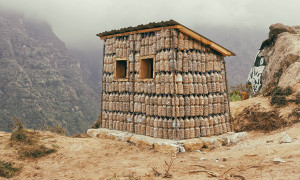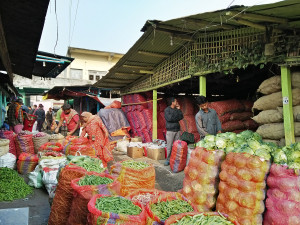Money
Bank lending drops by half as firms flounder
Lending by commercial banks has nearly halved as businesses are floundering due to the effects of the April 25 earthquake and Indian trade embargo.
Lending by commercial banks has nearly halved as businesses are floundering due to the effects of the April 25 earthquake and Indian trade embargo.
According to the Nepal Bankers Association (NBA), banks issued loans amounting to Rs73 billion during the first half of the current fiscal year 2015-16, which is about half of what they lent during the same period in the last fiscal year. Loans issued in the first six months of last year totalled Rs126 billion.
Between July 17, 2015 and January 15, 2016, the overall lending by commercial banks grew from Rs1,102 billion to Rs1,175 billion. In the previous fiscal year, lending had grown from Rs900 billion to Rs1,026 billion during the period July 16, 2014 to January 16, 2015.
Bankers said that lending had slowed during the review period mainly due to the political unrest in the Tarai over dissatisfaction with the new constitution and the Indian trade embargo.
Chief Executive Officer of the Bank of Kathmandu Ajaya Shrestha said that loan demand from almost all sectors had slumped during the period with traders and industrialists not being able to import goods and raw materials because of the embargo.
“Loan demand from industries and the trading sector which require working capital was mainly affected by the embargo,” he said.
India imposed an embargo against Nepal on September 22, two days after the promulgation of Nepal’s new constitution; and it remains in force, particularly at Birgunj, the largest transit point.
As per the data of Nepal Rastra Bank (NRB), credit growth in every sector has decreased during the first five months of the current fiscal year.
The credit grow rate in agriculture plunged to 0.6 percent from 9.2 percent during the same period in the last fiscal year. Credit growth in the production sector grew 0.5 percent compared to 9.7 percent in the previous fiscal.
Lending to processed oil and charcoal within the production sector recorded the sharpest drop of 15 percent.
Likewise, credit growth in construction, metal production and machinery, transportation equipment, wholesale retail and the service sector including tourism and education slowed. According to bankers, there is a trend among big borrowers to repay the loans of one bank by borrowing from another bank which also contributed to a rise in loans during this fiscal year.
“Corporate clients have a tendency to seek a lower interest rate from banks charging a high rate of interest or repaying high-interest loans by borrowing from another bank charging a lower rate of interest,” said Ratna Raj Bajracharya, CEO of Sunrise Bank.
Bajracharya added that lending to tourism, which was hit the hardest by the recent disasters, had dropped to almost nil.
“In fact, there is a clear reflection of the status of economic activities in the growth rate of lending,” he said.
According to bankers, banks have been hesitant to respond positively to fresh loan requests considering the current political situation and prospects for new projects in the current environment. However, they expect things to improve in the second half of this fiscal.
“We have seen a slight rise in demand for loans over the last one month along with a relaxation of the blockade at many border points,” said Shrestha, CEO of the Bank of Kathmandu. “Since traders have been able to reroute their shipments through alternative border points as the Birgunj Customs point remains closed, there has been a growth in demand for working capital from them.”
NBA data also shows that there has been some improvement in lending since mid-December. While total bank loans amounted to Rs44 billion before December 18, they swelled by Rs29 billion as of January 15.
2015-16 Rs71b Rs73b
2014-15 Rs77b Rs126b




 18.12°C Kathmandu
18.12°C Kathmandu













